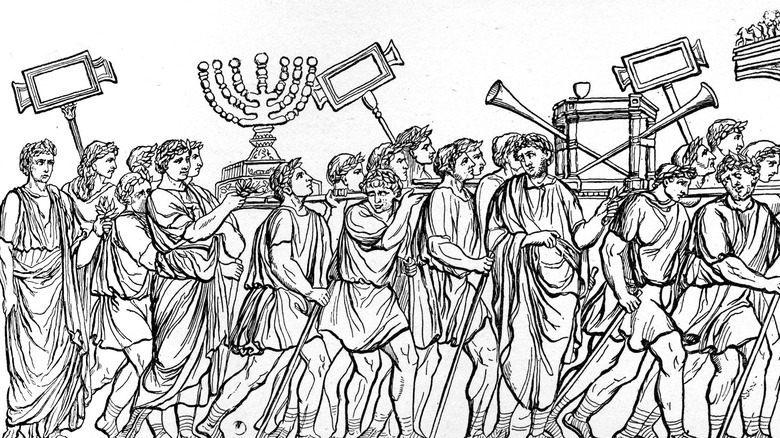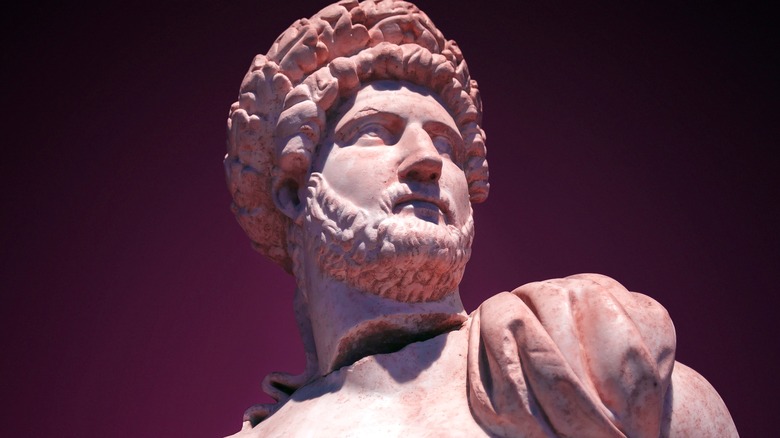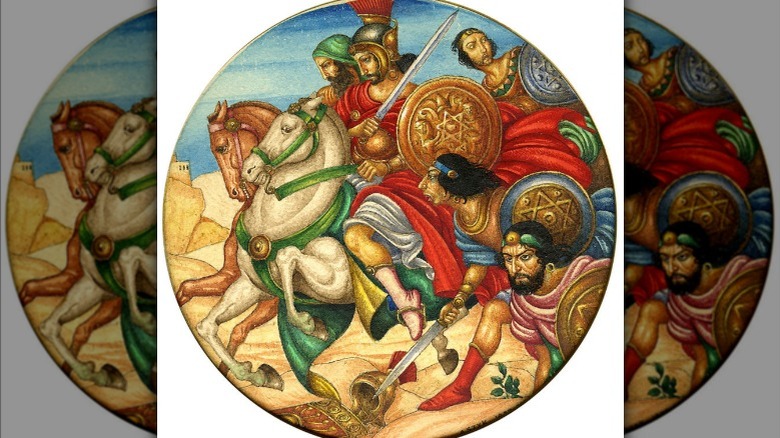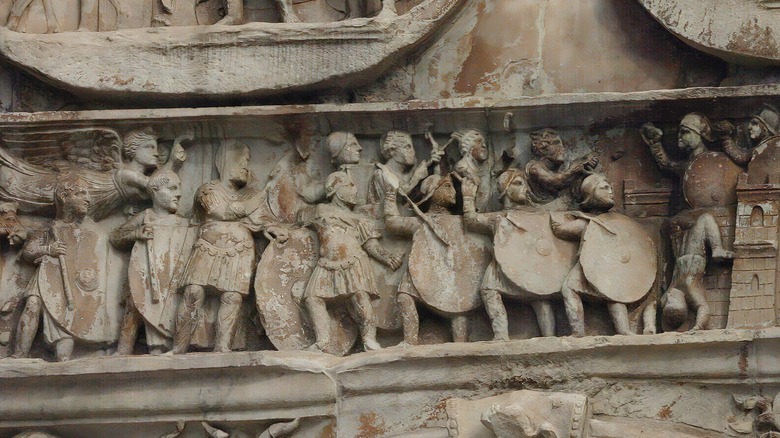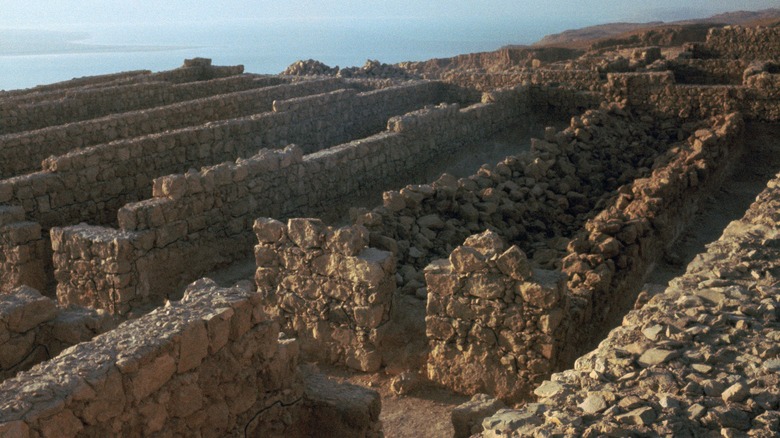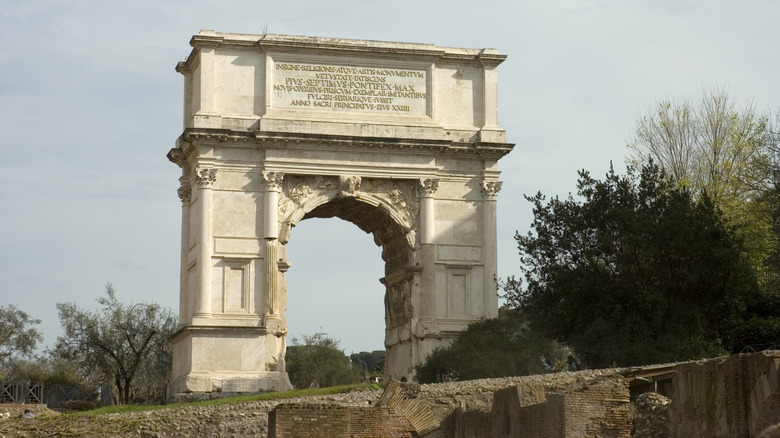Inside Shimon Bar Kokhba's Military Leadership Of The Judean Army Against Rome
Around 63 B.C., Roman Emperor Pompey captured Jerusalem, an event that triggered the first of three Jewish revolts (via Britannica). The first uprising occurred between A.D. 66 and 70. (via Britannica), and it was particularly brutal, made worse by warring factions within Jerusalem. Eventually, Romans seized the city, burned it to the ground, and forced many Jews into enslavement per Heritage History.
Jerusalem was slowly rebuilt, but it remained under Roman rule — circumstances that bred resentment. A second revolt occurred between 115 and 117 A.D., and it was so severe that it took two years for the Romans to eventually overpower the Jewish. The number of Jews who died during the second revolt was so great that it led to a decline in the population, according to Vita Romae. A third rebellion occurred between 132-135 A.D., and it differs from previous ones because it had a leader, Shimon bar Kokhba.
He resisted Roman edicts
Shimon bar Kokhba was outraged by a series of laws enacted by Emperor Hadrian (above), who wanted to see Jerusalem become a Roman city. One of his statutes outlawed circumcision (via Britannica), and another established the Aelia Capitolina on the ruins of where the Old Temple in Jerusalem once stood, per the ANU Museum of the Jewish People. The building of the Capitolina led to the collapse of King Solomon's tomb, an event that many perceived as a messianic omen, per Livius.
While there aren't many accounts of Bar Kokhba, there is little doubt he existed. His name appears in some accounts, and it was even found on coins discovered about the same time as the revolt, according to Livius. Moreover, 11 letters discovered in a Judean cave are believed to be written by Bar Kokhba to one of his commanders, according to the Jewish Telegraphic Agency.
Shimon Bar Kokhba thought he was the messiah
From what experts can gather, Shimon bar Kokhba was charismatic, causing many to think he was the messiah (via the ANU Museum of the Jewish People). World History Encyclopedia notes that "Bar Kokhba" was not even his real name. Livius reports that it was Simon Ben Kosiba, noting that "Bar Kokhba" means "son of the star" in Aramaic, alluding to a messianic title. Bar Kokhba all but admitted he was sent from heaven and even referred to himself as "prince," according to New World Encyclopedia.
Not all believed Bar Kokhba to be the messiah, however, and many sources from the time painted him in a negative light. In fact, some people claimed he was a false messiah that brought suffering to his people. That said, New World Encyclopedia says Bar Kokhba could be perceived as the most popular "would-be messiah" in Jewish history to date.
He was a firm leader
Despite the disagreements over Shimon bar Kokhba being the messiah, there isn't much of a dispute that he helped the Jews present a unified front against the Romans, per World History Encyclopedia. Bar Kokhba took control of the economy as well as the military, skillfully managing an army of some 400,000 soldiers, according to the Jewish Virtual Library. He was a strict leader, known for his courage and cruelty alike (via ANU Museum of the Jewish People).
The Jewish Telegraphic Agency reports that Bar Kokhba's letters reveal that he demanded obedience. In fact, the requirements for serving in his army were severe. Men willing to fight for the cause had to pass the unsavory test of cutting off one of their fingers. After rabbinical objections to that particular requirement, Bar Kokhba changed it to being able to pull up a cedar tree while riding horseback, as the ANU Museum of the Jewish People reports.
His revolt included guerrilla warfare
Shimon bar Kokhba planned an organized revolt. Soldiers reportedly collected arms and dug underground tunnels specifically for guerrilla warfare. The tactic of surprise was one way Bar Kokhba was able to get the upper hand on the Romans. He also waited until Emperor Hadrian left before waging war — a move that forced Hadrian to send one of his best generals, Julius Severus, to fight (via World History Encyclopedia).
In the early stages of the revolt, the Romans suffered losses. Bar Kokhba managed to stave off 11 legions of the Roman army, destroying one of them, according to the ANU Museum of the Jewish People. Some records indicate that Bar Kokhba's army gained control of Jerusalem and even a section of Judea before suffering the wrath of Rome. It is even believed that the Judean Desert might have been the location of Bar Kokhba's last stronghold, per Encyclopedia.com.
Shomin Bar Kokhba's uprising was short-lived
Shimon bar Kokhba's revolt lasted some three years (via New World Encyclopedia). This was just enough time for the Romans to reorganize and return stronger than before, ready to burn everything to the ground, according to World History Encyclopedia. Bar Kokhba's body was discovered at Bethar, which likely fell sometime in late 135 A.D. His head was reportedly taken to Emperor Hadrian, who determined that the Jewish religion was not compatible with the Roman way of life.
In the end, some 580,000 Jews were killed, and 985 villages and 50 towns were destroyed, per Vita Romae. Romans eventually constructed buildings where the Temple once stood and over the tomb of Jesus. Jews were banned from living in and even visiting Jerusalem. Bar Kokhba's legacy was tainted by claims that he was the messiah, and some sources began to call him "Bar Kozeva," which means "son of lies," per New World Encyclopedia.
